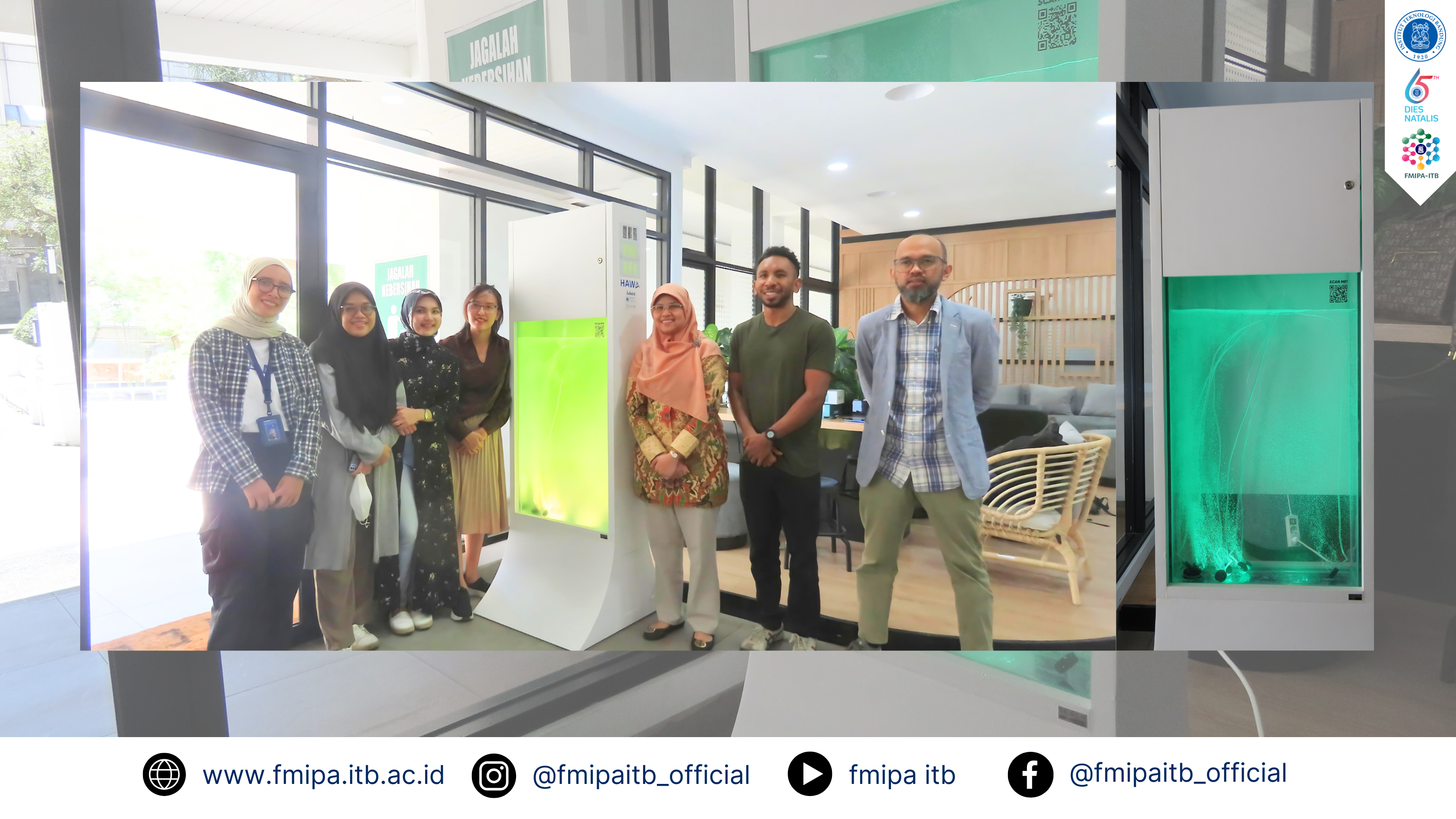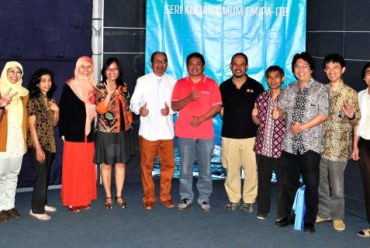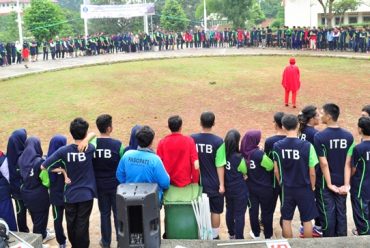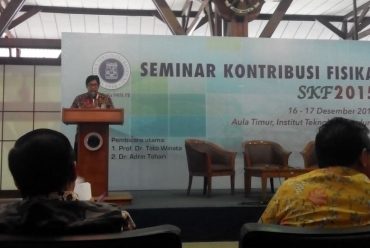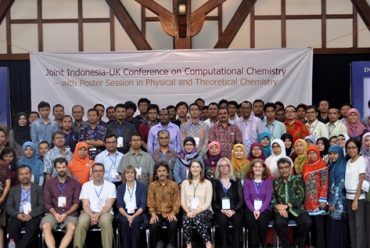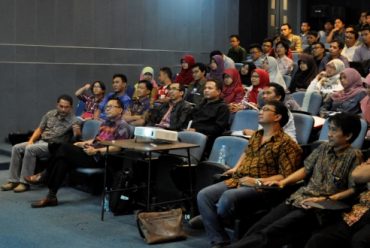Pemanfaatan Phototank Mikroalga sebagai Penyerap CO2 di Daerah Perkotaan
BANDUNG, fmipa.itb.ac.id –Tim Peneliti Mikroalga dari KK Biokimia dan Rekayasa Biomolekul, FMIPA ITB bekerjasama dengan Greenlabs (PT. Inovasi Hijau Indonesia) dan Jubelo dalam mengembangkan phototank penyerap CO2 berbasis mikroalga hijau (G-AlgaeTM). Pengembangan phototank ini terinspirasi dari pohon artificial yang sudah dikembangkan di luar negeri, yaitu cairan mikroalga sebagai penyerap CO2 pada daerah perkotaan dengan lahan yang terbatas. Berbeda dengan produk yang telah dikembangkan di luar negeri, phototank 100 L yang dibuat oleh Tim Peneliti Mikroalga menggunakan spesies mikroalga hijau isolat lokal yang diteliti dan dioptimasi di laboratorium ITB, yaitu spesies Nannochloropsis sp. Mikroalga memiliki sistem carbon concentrating mechanism (CCM) yang berperan dalam penyerapan CO2 untuk fotosintesis. Kemampuan penyerapan CO2 oleh 100 L kultur Nannochloropsis sp. ini diperkirakan setara dengan 1–2 tanaman tingkat tinggi. Untuk memonitor kualitas udara di sekitarnya, phototank tersebut juga dilengkapi dengan sistem sensor polutan.
Selama pengembangan prototipe phototank tersebut, berbagai tantangan dihadapi oleh Tim Peneliti Mikroalga. Salah satunya terkait dengan pemilihan spesies mikroalga yang tepat untuk dikultivasi dalam phototank tersebut. Sebelum menggunakan Nannochloropsis sp., tim peneliti sempat mempelajari spesies Chlamydomonas reinhardtii sebagai kandidat mikroalga hijau yang akan digunakan. Namun, spesies mikroalga ini ternyata memiliki laju pertumbuhan yang sangat tinggi, sehingga diperlukan penambahan media baru dalam waktu singkat. Hal tersebut tidak diinginkan karena kurang praktis dan ekonomis. Nannochloropsis sp. akhirnya dipilih karena memiliki warna yang lebih cerah, lebih tahan kontaminasi, dan usianya diperkirakan bisa mencapai orde bulan melalui optimalisasi media dan kondisi tumbuh.

Pembuatan phototank penyerap CO2 ini didukung oleh Program Dana Padanan 2024 (Matching Fund/ Kedaireka) DIKTI Kemendikbudristek, yang dikelola oleh LPIK ITB. Selain itu, aspek riset dan pengembangan (R&D) juga secara sinergis didukung oleh Riset ITB 2024. Tim Peneliti Mikroalga di KK Biokimia dan Rekayasa Biomolekul terdiri dari Rindia Maharani Putri, Ph.D, Alfredo Kono, Ph.D, Prof. Zeily Nurachman D.Sc., Yanti Rachmayanti, Ph.D, dan Dr. Eng. Sari Dewi Kurniasih. Proyek ini juga melibatkan mahasiswa MBKM dari Program Studi Sarjana Kimia ITB yaitu Putri Ayunita Azahra dan Jasmine Azizah. Menariknya, tim dari Greenlabs sendiri juga terdiri dari alumni-alumni Kimia ITB, yaitu CEO Greenlabs, Eunike Kartika Salduna, S.Si., M.Si., dan Algae Innovation and Development Supervisor, Chalisya Dibya Iranisha, S.Si.
Setelah prototipe ini terpantau dapat berfungsi dengan baik, selanjutnya akan dibuat sembilan produk skala terbatas dalam tahun ini. Beberapa produk akan diletakkan di ITB dan Greenlabs, sedangkan sisanya di luar ITB, seperti perkantoran, pusat perbelanjaan, atau apartemen. Pada daerah dengan luas terbatas seperti perkotaan atau indoor, phototank ini dapat menjadi alternatif untuk menyerap karbon dioksida dan menghasilkan oksigen secara fotosintetik. Rindia menyampaikan, “Harapannya phototank ini dapat menjadi produk hilirisasi riset yang bisa dikomersialkan, tentunya setelah memiliki paten dan dokumen komersialisasi dengan mitra Greenlabs melalui LPIK ITB.” [Siti Komariah]

